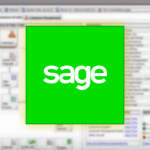
With artificial intelligence (AI) revolutionizing web design, there is no longer any reason to not have a website today. Now, it only takes a few minutes to create something that used to take a lot of time. If you want to skip learning how to make a website from scratch, AI promises a quick, beginner-friendly solution for everything from designing your layout to writing all of your web copy. However, when learning how to design a website using artificial intelligence, you should keep in mind that no two AI solutions are the same. You will want to do your research and make good use of the tools you have.
Are you eager to obtain an AI-powered solution?
Try the AI website builder on Wix. How artificial intelligence (AI) is changing web design A recent Hubspot study found that 93% of web designers had used AI, with half using it specifically to design their websites. What are the benefits? Rather than taking days or weeks to manually wireframe and code new designs, AI features can generate mockups and prototypes in minutes and design and code entire webpages. Or, AI can make the process easier for more experienced web developers by generating code samples. Filling your pages with compelling text, images, and other media assets is probably one of the most laborious aspects of creating a website. In the Hubspot survey, more than half of designers (58%) said that using AI for this purpose saved them money and time.
Infuse expert-level best practices: The most advanced AI website builders are outfitted with the most up-to-date technology and data on the latest web design trends. For instance, Wix’s website builder makes use of the company’s extensive ecosystem of solutions and decades of expertise to automatically generate websites that are tailored to your specific industry and objectives. Try out new design methods: For more experienced web designers, AI can be useful for iterating on your own ideas or finding inspiration. In addition, 43% of designers in the Hubspot study reported using AI to monitor performance and quality.
How to design a website with AI in 7 steps
So, how can you begin using AI to build a website? The procedure is walked through in detail here. Collect vital information Select an AI-based website builder. Make your website with AI. Enhance your AI branding. Utilize AI-generated content to fill pages. Make use of AI to improve your site’s SEO. Add UX features powered by AI. 01. Collect vital information The quality of the information you provide to an AI often determines its output quality. Your AI solution can be directed in the right direction with a comprehensive dossier of information about your brand. You don’t have to have a complete style guide with you, but you do need to know some basic information like: The goal of your website Your audience in mind The goods or services that you intend to offer for sale What distinguishes you from the competition? a business idea that reflects the personality and/or values of your brand Why is this important? Let’s say you want to create a website for online shopping that sells ring lights. If you’re primarily targeting Gen Z customers who want your lights for personal projects rather than corporate customers who would use your lights for professional projects, your website will look different. You will need to select which audience(s) are most important to your brand in order to reduce the amount of back and forth that occurs during the web design process. 02. Select an AI-based website builder.
There are a lot of AI-powered tools to think about, from all-in-one platforms to apps that can only do one thing at a time. Choose one of the best AI website builders to start. You can use a combination of tools (such as MidJourney, ChatGPT, and DALLE3) to assist you at various stages if you want to keep as much control over the process as possible. AI website builders are your best bet for the simplest solution. Website builders like Wix offer interfaces that are simple to use and AI features that not only create your website for you but also walk you through the process. Be sure to carefully consider your options. You’ll need to look at things like: Your essential features: What is your website’s strategy?
Should online scheduling be enabled?
Do you need a way to pay with a credit card online? What about gated pages or additional specialized features? Make sure your solution can handle your specific line of business. Your internal capabilities: Do you have engineers and designers who are able to work with code? Or, are you a “solo-preneur” who prefers to concentrate on sales and requires a more generic solution? Your budget: Are the prices clear and within your means? Some AI website builders provide premium services for a fee, while others are free. Another company charges a one-time fee for each design. Always keep an eye out for any additional costs and remember to take into account both your current and potential requirements. Options for customization: Can you make adjustments to your site to make it look just right?
How much leeway do you have over your website’s branding?
Options for integration: Does your solution work well with other tools you use, like email marketing platforms or social media platforms? Check the integrations that are readily available and the tools that are already built into your website builder. Maturity of AI: Although AI is still in its infancy, it is not brand-new to the technology industry. Some businesses have been doing this for a longer period of time than others; for instance, Wix has been at the forefront of AI since 2016. Wix’s AI designs are informed by years of in-house design expertise, avoiding generic solutions and flimsy tools. Sign up now to start using Wix for free. 03. Make your website with AI. Using a website builder or taking a more a-la-carte approach are the two main choices for building a website with AI, as previously mentioned. Let’s go over each scenario one by one. Using a website builder with AI To get started, most AI-powered website builders will ask you a few questions; however, the specific steps depend on the platform. When you first start using Wix, you will be greeted by a one-of-a-kind chat-based experience in which a series of questions will be asked to set you up. In particular, you will need to perform the following actions: Click “Create with AI” on the Wix AI website builder page to create a new Wix account or log into an existing one. On the subsequent screen, select “Start chat.” In the chat box, respond to the questions. In order to create a website with all of the pages, content, and widgets you need to support your brand, the AI will inquire about your business and objectives. Give the AI as much relevant information as you can by answering these questions slowly. Click “Generate Site” when you are given the option. After that, Wix will create a website with header designs, images, and text that represent your business. If you want to make changes, you can ask the AI to recreate the site or change specific aspects of the site brief, like the theme or structure. Move to the Editor by clicking “Continue with this site” when you are happy with the design. From the Editor, make any other changes you want to. AI tools for product descriptions, website copy, and images are just a few of the many built-in AI features that are available in the Wix Editor. As you refine your website, make use of these features to your advantage. Publish your completed website. Without using a website builder that uses AI As required, combine multiple AI applications. AI tools like DALLE and Midjourney can help you visualize your concepts during the site design phase. Give a few essential details about your website, such as its goal and primary message. If you can describe your preferred, you can get even better results: Style in the visuals (modern, minimalist, vintage, etc.) scheme of colors (such as monochromatic, pastel, etc.) Preferences for layout (asymmetrical, on-page, etc.) Icons or images (such as pictures of products, lifestyle shots, shopping carts, etc.) tone or mood (relaxing, businesslike, etc.) Experience for the user (mobile-friendly, emphasizing user engagement, etc.) Inspirational sources (mention specific brands or designs to model after, but be careful not to accidentally violate copyright). For instance, when DALLE was given the prompt, “Homepage for a minimalist website that specializes in hand-knitted apparel,” they created the following together.











